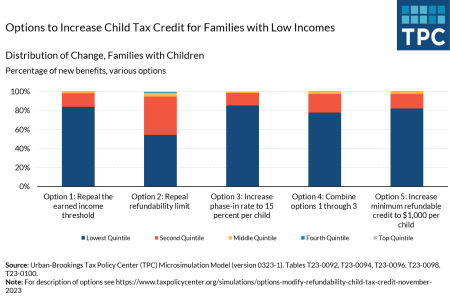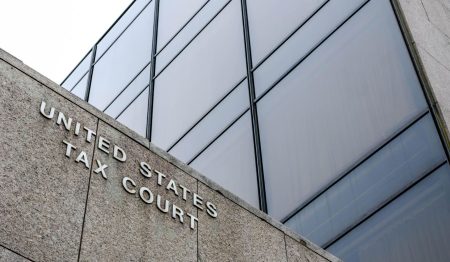The past two months have made clear that President Joe Biden’s approach to making higher education more affordable isn’t working. First, bipartisan majorities of both the U.S. House and Senate voted to block his debt cancellation policies. Then, shortly after Biden thwarted that effort with his veto pen, the Supreme Court ruled his attempt to cancel up to $20,000 of student loan debt per borrower was an illegal overreach of executive authority.
Biden responded to the setback by announcing two debt-cancellation schemes shortly after the Supreme Court issued its ruling. The first was the finalization of a new income-driven repayment (IDR) plan known as the SAVE plan. Biden also announced he would start a new process under the Higher Education Act to cancel more debt “for as many borrowers as possible, as fast as possible” through executive action.
Doubling down on a misguided strategy of trying to cancel as much debt as he can without congressional approval is not the solution. Instead, Biden should invite lawmakers from both parties to join him in developing meaningful reforms that tackle the underlying cause of ballooning student debt: skyrocketing college costs. Not only is this approach more legally and politically durable, it will also provide greater economic benefits.
To the extent some debt cancellation is necessary, Biden is right to deliver it through an expansion of IDR. These plans cap borrowers’ monthly payment at a certain percentage of their income and any debt that remains after enough payments are made is forgiven. Whereas one-time debt cancellation measures – such as the one struck down by the Supreme Court – provide large windfalls to recent law or medical school graduates who are likely to experience high lifetime incomes, IDR plans target relief to people who are truly in financial need.
Unfortunately, the SAVE plan overshoots. A well-targeted expansion of IDR would make sure students whose investment in a college education doesn’t pay off aren’t overly burdened by it while still requiring students who enjoy the above-average incomes a college degree confers pay back the loans that made it possible. But the Progressive Policy Institute’s analysis found median-earning college-educated workers enrolled in the SAVE program would only end up paying three fifths of the amount they initially borrowed – and not a dollar of interest. This is a dramatic change from pre-existing IDR plans that don’t provide any benefit to the median-earning college graduate over the standard repayment schedule even if they borrow the legal maximum of federal student loans.
Meanwhile, median-earning college dropouts would likely pay less than $20 per month for fewer than five years before having their remaining debt wiped away. Although students who were unable to complete a degree are generally the ones most in need of debt relief, shifting almost all of the risk to taxpayers disincentivizes prospective students from making sure the program they are enrolling in will be beneficial. Even families that can afford to save and pay for school with cash are likely to take out loans because of how generous the SAVE plan’s subsidies are likely to be for the vast majority of students – and that’s before taking into account whatever additional debt cancellation Biden delivers through the Higher Education Act.
The administration’s obsession with debt cancellation is likely to create more problems than it solves over the long run: A Federal Reserve Bank of New York study concluded tuition increased by 60 cents as a result of each additional dollar spent on federally subsidized student loans over the past 50 years. Expanding debt cancellation without adopting policies that slow the accumulation of that debt would simply encourage colleges and universities to continue raising tuition faster than inflation instead of making the tough choices needed to contain costs.
Even if these were good policies, enacting them through executive action makes them far more likely to be ruled illegal by the Supreme Court or reversed by a future Republican administration as the problems become clearer. The only durable solution is one enshrined into law with the support of both the president and Congress. Fortunately, there are signs even Republicans in Congress might be interested in working with President Biden on comprehensive solutions for higher education affordability if he is willing to work with them.
The Lowering Education Costs and Debt Act introduced by five GOP Senators in June would modestly expand previous IDR options (though not as much as the SAVE plan does) and pair that expansion with provisions to both control costs and make those costs more transparent for prospective students. For example, the bill would prevent new federal loans from being issued to pay for undergraduate programs in which at least half of graduates earn a salary below that of the median worker with only a high school diploma, or graduate programs in which at least half of graduates earn less than the median worker with a bachelor’s degree. These provisions would ensure taxpayer money is no longer used to subsidize predatory programs that don’t provide any material benefit to their students – often the most vulnerable ones who are scammed into junk degrees.
The Senate GOP bill isn’t perfect. It could provide more assistance to students from disadvantaged backgrounds or do more to encourage programs that deliver some value for students but at a price far higher than it needs to be to trim unnecessary degree requirements or bloated administrative costs. And more broadly, policymakers must do more to provide accessible pathways to well-paying jobs that don’t require a college degree. But it is better than any proposal Republicans would have supported during the Trump or Obama administrations and thus demonstrates a clear opportunity for Democrats to engage.
Both advocates and opponents of student debt cancellation understand that this alone cannot solve the problem of higher education affordability in the United States. But for the past two years, supporters’ obsession with it has sucked the oxygen away from discussing more common-sense solutions. Instead of asking working-class Americans to foot the bill for people who will experience higher lifetime incomes than them, or waste money on programs that don’t pay off, it’s time to recognize that papering a problem with taxpayer money isn’t a solution and work together on bold ideas that actually will.
Read the full article here








